Masterpiece Story: L.O.V.E. by Maurizio Cattelan
In the heart of Milan, steps away from the iconic Duomo, Piazza Affari hosts a provocative sculpture by Maurizio Cattelan. Titled...
Lisa Scalone 8 July 2024
18 October 2023 min Read
Among the works of the famous sculptor and architect Gian Lorenzo Bernini (1598–1680), the sculptural group called Ecstasy of Saint Teresa remains until this day one of his most fascinating works. DailyArt Magazine invites you to learn about this sculpture in detail.
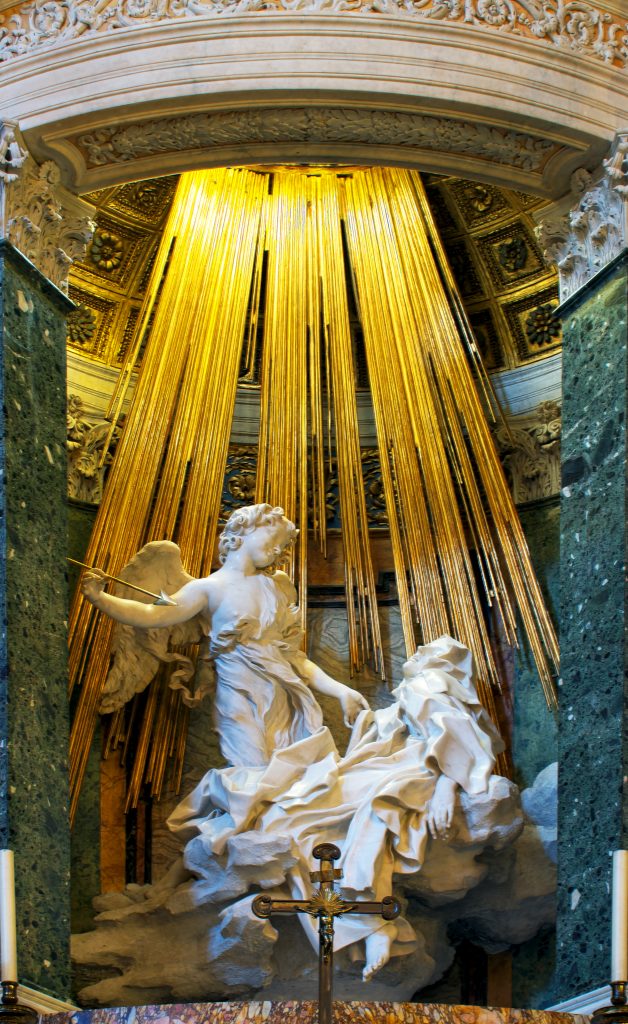
Gian Lorenzo Bernini, Ecstasy of Saint Teresa, 1647-1652, Santa Maria della Vittoria, Rome, Italy.
Emblematic sculptor of the Italian Baroque, Gian Lorenzo Bernini was born in Naples in 1598. His father, who was himself a sculptor, taught him his art as they settled in Rome. Thanks to the patronage of Cardinal Scipione Borghese (1577-1633), a great collector and nephew of Pope Paul V (1550-1621), the young man quickly developed a prolific career, first sculpting decorative pieces for the Villa Borghese in Rome.
The artist, considered by his contemporaries as the worthy successor of Michelangelo, became the leader of Italian Baroque art. Dynamism, movement, tension, and dramaturgy are indeed the primary characteristics of Bernini’s work. Mastering the art of breathing life into marble, the sculptor acquired a reputation that went beyond Italian borders.
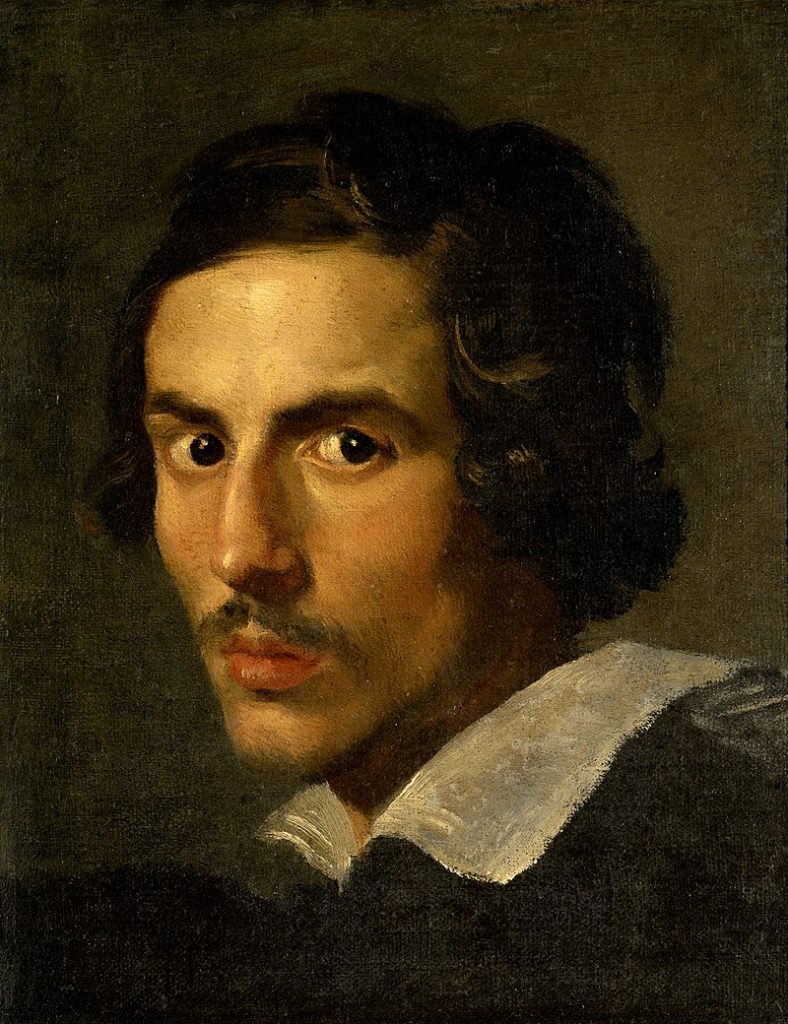
Gian Lorenzo Bernini, Self-portrait, c. 1623, Galleria Borghese, Rome, Italy.
Produced from 1647 to 1652 in the Cornaro Chapel located in the church of Santa Maria della Vittoria in Rome, this marble work depicts an episode from the life of Saint Teresa of Ávila (1515-1582). She was a nun who reformed the order of Carmel and was canonized in 1622 by Pope Gregory XV. Author of several spiritual writings, she published her autobiographical story called Book of Life in 1566. Bernini thus chose to represent the ecstasy of the saint that she herself described within this text:
So I saw the angel holding in his hand a long golden dart, the iron end of which bore, I believe, a little fire. It seemed to me that he sometimes plunged it through my heart and buried it to the insides. Pulling it back, it seemed as if this iron took them with it and left me all aflame with an immense love of God. The pain was so sharp it made me moan like I’ve been talking about. But the sweetness caused by this incomparable torment is so excessive that the soul cannot desire its end, nor be satisfied with anything apart from God.
Book of Life, Chapter 29.
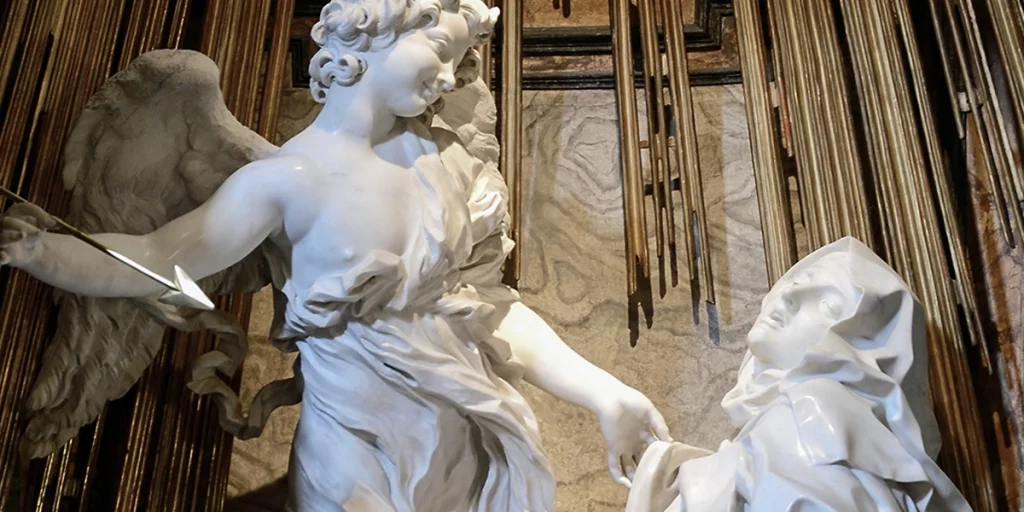
Gian Lorenzo Bernini, Ecstasy of Saint Teresa, 1647-1652, Santa Maria della Vittoria, Rome, Italy. Detail. Aleteia.
Based on the elements of this story, Bernini represents Saint Teresa alongside an angel armed with a golden arrow. Her body is entirely abandoned to enjoyment, supported by a cloud. Her head slightly tilts back while her eyes roll back and her mouth opens in total ecstasy.
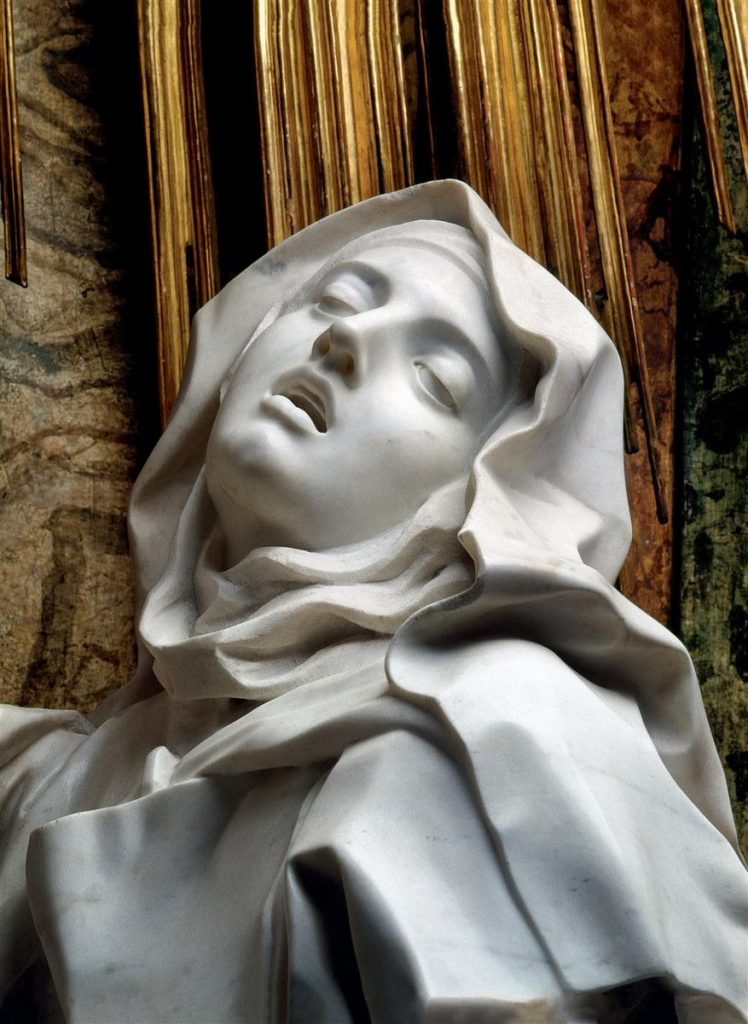
Gian Lorenzo Bernini, Ecstasy of Saint Teresa, 1647-1652, Santa Maria della Vittoria, Rome, Italy. Detail. Reddit.
The attention to detail, as well as the transcription in stone of the movement of the draperies and the tension characterizing the face and the body of the saint, are Bernini’s characteristics. In addition, the staging of lively architectural composition, which is similar to a theater stage, reinforces the dramaturgy of the representation. The family of the work’s commissioner, Cardinal Federico Cornaro (1579-1653), surrounds the group from above, animated by lively conversations. We can see them in illusionistic windows placed above the central group as if they were theatre spectators of the divine scene.
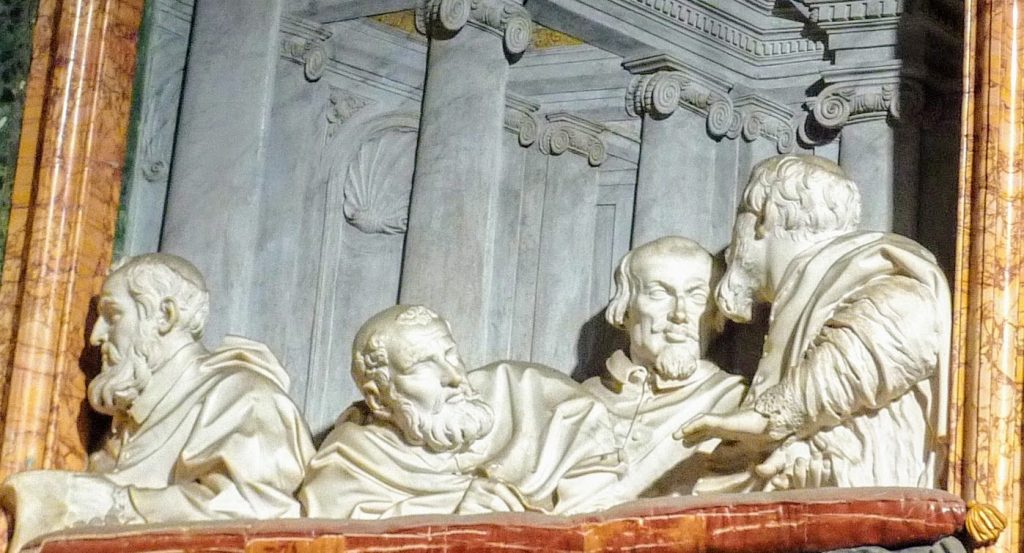
Gian Lorenzo Bernini, Ecstasy of Saint Teresa, 1647-1652, view of four members of the Cornaro family, including Cardinal Federico Cornaro, Santa Maria della Vittoria, Rome, Italy. Detail. Walks in Rome.
If the work is a representation of the incredible power of divine love, Bernini seems to play with the viewer by offering an erotic reading of his art. An obvious sensuality emanates from the work; the carnal representation of this body, the satisfaction of the face, and the mysterious smile of the angel which can also include a double reading.
It prompted several art historians to see in it the evocation of a purely physical orgasm. The French writer Marquis de Sade went as far as to write that “It is hard to believe that she is a saint”. Definitely disturbing, this work thus contains a complex duality… It’s up to you to decide which ecstasy – spiritual or carnal – you want to see in this fascinating sculpture!
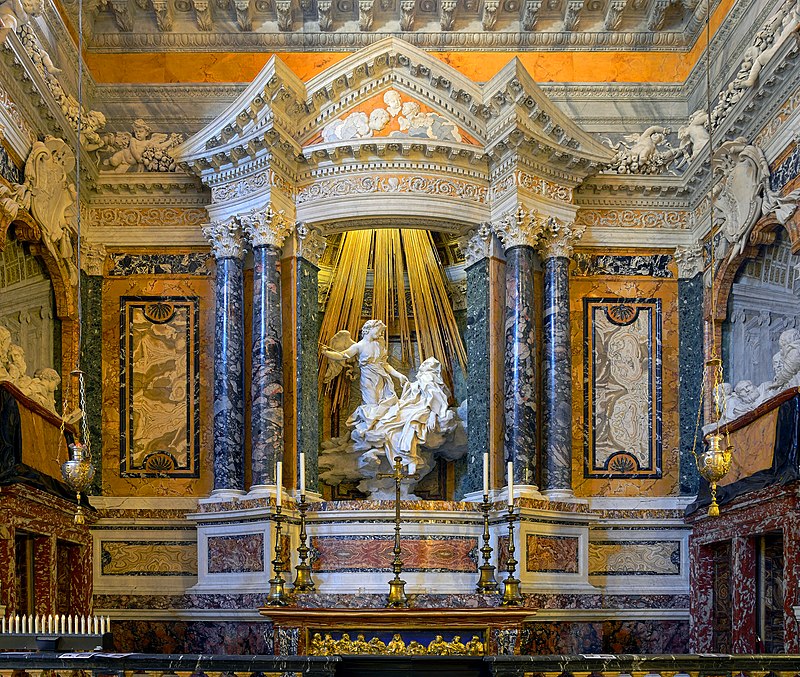
Gian Lorenzo Bernini, Ecstasy of Saint Teresa, 1647-1652, Santa Maria della Vittoria, Roma, Italia.
This episode of ecstasy inspired other artists, such as Heinrich Meyring in Santa Maria di Nazareth in Venice (1697). As a subject that became popular following the canonization of Teresa of Avila, the ecstasy of the saint fascinated not only artists but also scientists.
About ten years following her death, Teresa’s body was exhumed. She was buried without embalming yet her body was perfectly preserved. On this occasion, a surgeon removed Teresa’s heart in order to preserve it in a reliquary. He then noticed that it bore a deep tear as well as burn-like marks, identified as being related to the aforementioned ecstasy. A neurologist Gilles Huberfeld now interprets these ecstatic events as possibly akin to epileptic seizures.
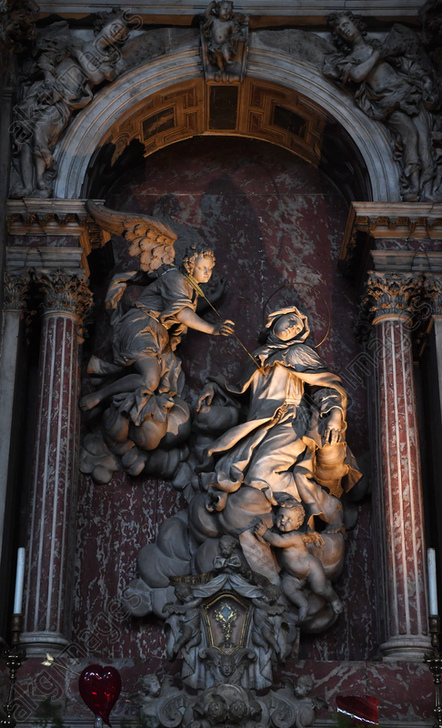
Heinrich Meyring, Ecstasy of Saint Teresa, 1697, Santa Maria di Nazareth, Venice, Italy.
A masterpiece created by one of the greatest names in art history, the Ecstasy of Saint Teresa does not leave the viewer indifferent. The imagination remains an essential component of this Baroque work where theatricality and the grandiose come together.
DailyArt Magazine needs your support. Every contribution, however big or small, is very valuable for our future. Thanks to it, we will be able to sustain and grow the Magazine. Thank you for your help!